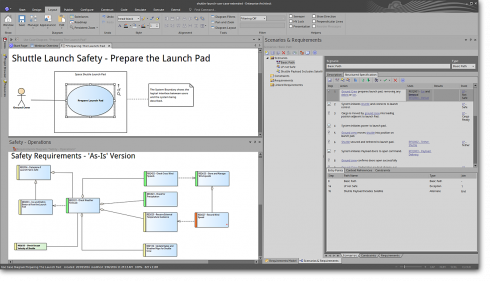
Ever since Sparx Systems released its flagship product Enterprise Architect (EA) almost 20 years ago, the company philosophy has been to open up access and distribution of information about the enterprise and democratize knowledge for the stakeholders.
The company specializes in highperformance and scalable visual modeling tools based on the Unified Modeling Language (UML) and its related specifications for the planning, design and construction of software-intensive systems. Sparx Systems is a contributing member of the Object Management Group (OMG) and is focused on realizing the potential of model-driven development, based on open standards.
According to Tom O’Reilly, COO of Sparx Systems, the rationale of using visual modeling to allow access to data to every stakeholder, regardless of their respective roles within the organization, just makes sense.
“Even the most complex of systems can be described simply with a visual model,” O’Reilly says. “Describing a system or process with text can be long, verbose, and hard to follow. Using a visual model, anyone, regardless of their technical background, can look at a model and see what parts of the system exist, how they relate to the other parts of the system and how information flows within that system.” The company backs up its vision and rationale by allowing those models to be available to anyone, on any device with a web browser via its Pro Cloud Server and WebEA solutions.
Living in the Cloud
In today’s development environment, having a clear-cut cloud strategy is critical. Sparx Systems has always encouraged integration of EA with other toolsets, whether they be to customize models for a specific vertical industry or proprietary standards, or to import data from legacy sources or platforms. In addition, exchanging information helps to prevent vendor lock-in, improves asset and software utilization and provides access to information throughout the entire project life cycle. Because it’s in the cloud, all stakeholders can access information when and where they need it. They can contribute to the modeling process and update information on the fly, so it’s more accurate and timely.
Sparx System’s OSLC Restful API is a key component of its cloud strategy. It works by providing the gateway for the exchange of information between model repositories stored in EA and other systems, using the process of linking data through HTTP standard methods for creating and managing lifecycle artifacts. O’Reilly explains, “OSLC has been developed as a mechanism to allow different web-based software applications to share their information, while keeping them stored in the customer’s tool of choice. This allows EA to integrate with other providers in a complementary way, putting the power of choice back into the customer’s hands.”
For instance, if a developer wants to use Jira for requirements, do their application portfolio management using ServiceNow, and enterprise modeling in EA, they can. The Pro Cloud Server API allows users to keep their information in their relevant systems, but then use EA as the hub to describe how those other systems fit into the enterprise architecture of the organization.
“Using OLSC the customer still has the advantage of full traceability from the business decision being made, through to the future state architecture, right down to the application and development levels, regardless of whether they are captured and stored inside EA or not,” says Geoffrey Sparx, founder and CEO of Spark Systems.
Integration benefits
- Simplicity: Provides a transparent and simple approach to view, manage and curate corporate knowledge and get it into the hands of the people who need it most. Integration ensures information inside silos is viewable and helps facilitate both access and usability across different platforms. It is simpler to model corporate information when it is readily available via a cloud platform.
- Democratization: Integration allows decisions to be made quickly using real-time insights from quality data. More eyes, feedback and stakeholder involvement ultimately lead to better business outcomes and help reduce internal barriers between business and IT, management and operations.
- Support enterprise adaptability: EA provides an adaptable platform that can facilitate the successful completion of projects in terms of scope, time and budget. Implementing additional functionality, like Time Aware Modeling, allows model changes to be reviewed over time, providing valuable insights for project managers.
- Simplifies deployment: Server-based deployment is efficient because no apps need to be installed, database connections don’t require configuration, and specialized secure tunneling or VPN infrastructure don’t exist to get in the way of being productive.
- Cost reduction: Not all stakeholders require a license to collaborate. Stakeholders can search the model, create Watchlists, contribute to discussions and review items.





